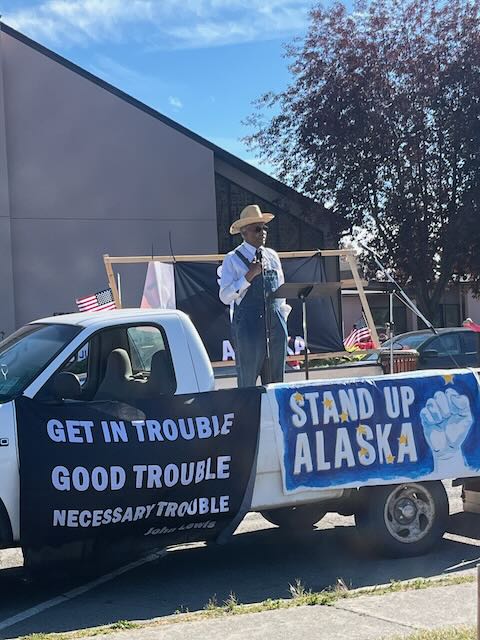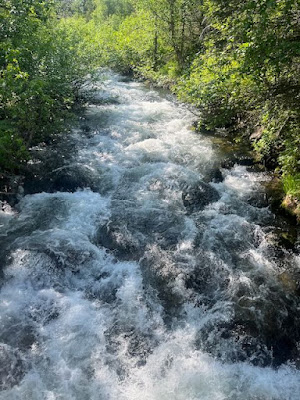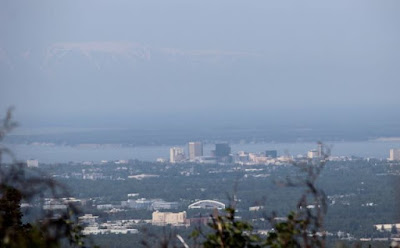[I found this draft post from July 2012. It appears never to have been posted. But it's interesting to see how what I wrote 12 years ago is still relevant today. Probably more so. And posting it today - August 3 - is fitting as you will see if you read it.]
Getting the facts right - whether it's in an old sexual abuse case or an attempt to see how ground vegetation has changed over a period of time - is the first step. Once the facts are established, then models - whether scientific theories, religious beliefs, or the unarticulated models of how the world works we carry in our heads - are applied.
For example, did your son lie to his teacher about his homework? If the answer is yes, then you must go through various models you have about topics such as lying, education, changing the behavior of young boys and apply them to this situation to get the desired result. It's not as easy as you might initially think. You may have a clear value that lying is never good. Or you may think there are times it is ok. Do you think his teacher is wonderful and working hard to teach your son to be a great human being with all the necessary skills? Or is he part of a corrupt educational system that expects all students in the class to be at exactly the same level at all times and finds fault with your son because he's brighter than most and bored in class, or slower than most and having trouble keeping up? Or do you think he is picking on your son because he's a different race from the teacher? And finally, will you talk this over with your son? Restrict his internet access for a week? Or whup him with a belt to help him learn this lesson? Or maybe you'll go to the school and defend your son and attack the teacher.
Things get much more complicated when we deal with the collective problems of a community. If king salmon aren't returning to their rivers in the numbers expected, how should state fish and game authorities deal with this? First, is their method of counting salmon working right? Perhaps the salmon are getting through without being counted? Then, do you restrict subsistence fishers? Which models do you use to explain the shortage? Is it climate change which is affecting the water temperatures? Is it overfishing by commercial ocean fishing vessels? Is it that these salmon are being caught as by-catch by bottom trawlers? And when you think you know, what model do you use to decide whether subsistence fishers are allowed to catch any?
All this is introduction to
Josias Braun-Blanquet who in 1927 devised the Braun-Blanquet scale. The
Botany Dictionary tells us about the Braun-Blanquet scale.
A method of describing an area of vegetation . . . It is used to survey large areas very rapidly.
Two scales are used. One consists of a plus sign and a series of numbers
from 1 to 5 denoting both the numbers of species and the proportion of
the area covered by that species, ranging from + (sparse and covering a
small area) to 5 (covering more than 75% of the area). The second scale
indicates how the species are grouped and ranges from Soc. 1 (growing
singly) to Soc. 5 (growing in pure populations). The information is
obtained by laying down adjacent quadrats of increasing size. One of a
number of variations of Braun-Blanquet's method is the Domin scale,
which is more accurate as there are more subdivisions of the original
scale. The Braun-Blanquet scale also included a five-point scale to
express the degree of presence of a plant. For example, 5 = constantly
present in 80-100% of the areas; 1 = rare in 1-20% of the areas.
So, essentially, this is a measuring device to calculate the percentage of an area that is covered by different plant species. Measuring is just the first step. Once you have the measures, then you can apply your models. (OK, I know some of you will point out that you can't measure anything unless you have models that tell you what to measure. True enough. But once you have the measures - in this case of percentage of species of vegetation in a certain location - you have to interpret what that means using a model or several.)
But one problem is that the measurements might not be accurate or might not be used right.
A
1978 Study in Environmental Management found the Braun-Blanquet scale to be adequate and more efficient than another method of measuring species in an area. Here's the abstract:
To document environmental impact predictions for land development, as
required by United States government regulatory agencies, vegetation
studies are conducted using a variety of methods. Density measurement
(stem counts) is one method that is frequently used. However, density
measurement of shrub and herbaceous vegetation is time-consuming and
costly. As an alternative, the Braun-Blanquet cover-abundance scale was
used to analyze vegetation in several ecological studies. Results from
one of these studies show that the Braun-Blanquet method requires only
one third to one fifth the field time required for the density method.
Furthermore, cover-abundance ratings are better suited than density
values to elucidate graphically species-environment relationships. For
extensive surveys this method provides sufficiently accurate baseline
data to allow environmental impact assessment as required by regulatory
agencies.
So, fifty years after Braun-Blanquet's scale went public, it was still being used. And apparently it is still in use today. And people are writing about some of the limitations of the model.
In
Monitoring Nature Conservation in Cultural Habitats:: A Practical Guide and Case Studies, (2007) by Clive Hurford and Michael Schneider, the Braun-Blanquet scale is compared to the Domin scale and both are found to have two sources of error. First, is the observer bias that could affect the initial estimate of the percentage of species coverage that is then used to identify the appropriate cover class. The second problem arises when the vegetation is at or near a vegetation boundary. This is, apparently, more of a problem in the Domin scale. (p. 82)
And a February 2009 (online) article in
Journal of Vegetation Science warns that the Braun-Blanquet abudance-dominance scale cannot be used with conventional multivariate analysis techniques because the Braun-Blanquet scores use ordinal numbers.
I bring this up for a couple of reasons. First, today,
August 3, is Braun-Blanquet's birthday. He was born in Switzerland in 1884 and died in France at 96 in 1980. Second, and probably of more general importance, has to do with science and truth.
We are at a time when science is under severe attack by a combined force of right wing politicians and fundamentalist religious groups. They pounce on what they call scientific errors and publicize them to 'prove' science isn't trustworthy. The
emails about global warming data is a good example.
Now, there are scientists who for various reasons (fame, money, revenge, you know the usual human failings that lead to compromises) do cheat. But the beauty of science is that one's work must be made public and when others try to duplicate your work and can't, then your work becomes suspect.
But the pursuit of truth is and will always be imperfect. Data collection and interpretation will always be dependent on the ability to observe and measure and interpret. And the Braun-Blanquet scale shows, in a small way, that even a technique that's been around over 70 years, is not perfect. But in science no one holds all the cards, no one proclaims truth for everyone else to accept.
Scientific truth is always being tested and challenged. That's its strength, but absolutists see it as a weakness.
DePaul University Professor of Environmental Science and co-director of DePaul University's Institute for Nature and Culture, has an interesting story about a project
to rid the oak woodlands of Rhododendron ponticum, an invasive shrub that was encroaching in the understory of this habitat in Killarney National Park in Ireland. It talks about the use of the Braun-Blanquet scale. It's posted at his blog Ten Things Wrong with Environmental Thinking.




















































